Nature & Conservation
Glenveagh falls within the Cloghernagore Bog & Glenveagh National Park Special Area of Conservation (SAC), and the Derryveagh & Glendowan Mountains Special Protected Area (SPA). It is also protected by EU and national law.
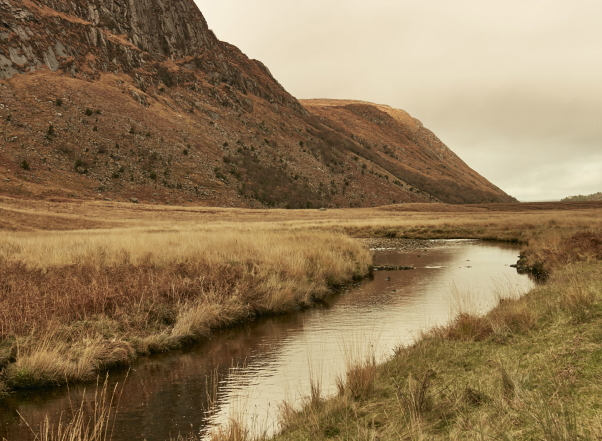
Most of the habitats in Glenveagh are in a semi-natural state, however past human activities such as tree felling, grazing livestock and the creation of a deer herd have had a lasting influence on its ecology. Growing visitor numbers will also impact the future of this landscape unless carefully managed. Read about our ongoing conservation projects in our monitoring section.
Conservation Projects
Project 01: Red-throated Diver Monitoring
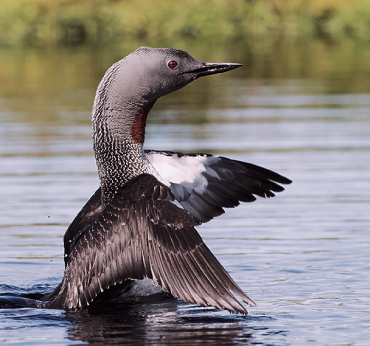
Above: red-throated diver
Project 01: Red-throated Diver Monitoring
The red-throated diver (Gavia stellate) is one of the hallmark species of Glenveagh National Park. This annual project monitors the population and breeding success in northwest Donegal.

Project 02: Goosander Nestbox Scheme
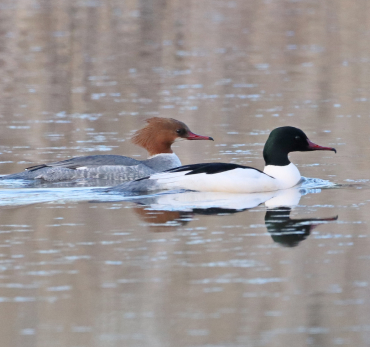
Above: male and female goosander
Project 02: Goosander Nestbox Scheme
Our goosander (Mergus merganser) nestbox scheme aims to support the small breeding population of this tree-nesting species in Donegal.

Project 03: Bumblebee & Butterfly Monitoring Schemes
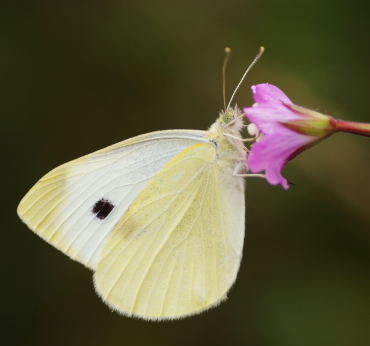
Above: large white (cabbage white) butterfly
Project 03: Bumblebee & Butterfly Monitoring Schemes
National Park staff undertake dedicated surveys for both bumblebee and butterfly species each summer. These surveys are carried out along two fixed routes, one on the Derrylahan trail, and one through the Castle Gardens. For more information on these schemes visit the National Biodiversity Data Centre website.

Project 04: Pearl Mussel Project
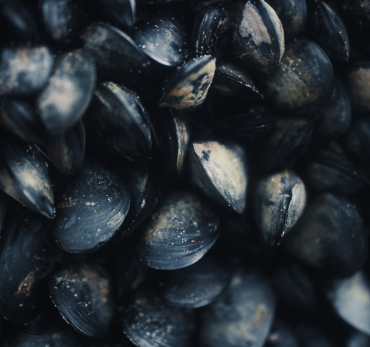
Above: pearl mussels
Project 04: Pearl Mussel Project
The Pearl Mussel Project is a pilot agri-environment programme to improve the quality of watercourses to benefit the endangered freshwater pearl mussel.
It is locally adapted, results-based and focuses on the top eight freshwater pearl mussel catchments in Ireland. Park staff participate in an annual assessment, the results of which are submitted to the Pearl Mussel Project.

Project 05: Glenveagh Native Woodland Strategy
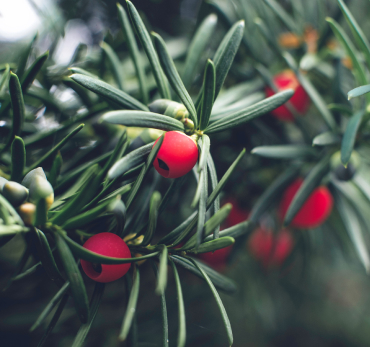
Above: yew tree leaves & fruit
Project 05: Glenveagh Native Woodland Strategy
This long-term strategy aims to improve woodland quality and structure, and return the park’s woodlands to their natural range and extent.

Project 06: Pilot Native Woodland Scheme
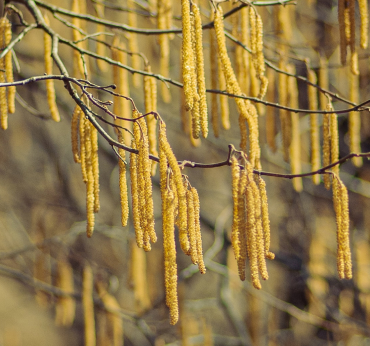
Above: Yellow catkins of hazel in spring
Project 06: Pilot Native Woodland Scheme
This scheme is exploring opportunities to re-establish native woodland species on some of the more marginal lands within what is considered the historic extent of the woodlands here. Subsequent phases will examine the potential for natural woodland regeneration within this study area.

Project 07: Scots Pine Ex-situ Conservation
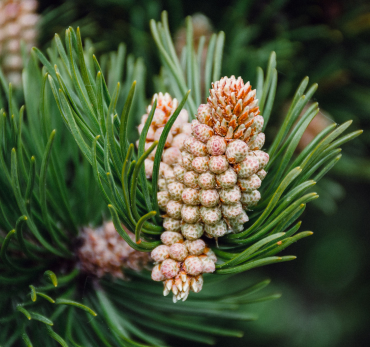
Above: scots pine
Project 07: Scots Pine Ex-situ Conservation
This project will involve the planting of up to 2,000 native Scots pine (Pinus sylvestris) seedlings and is one of the initial steps in the development of an acorn-to-tree approach to woodland conservation management within the park.

Project 08: Invasive Species Management
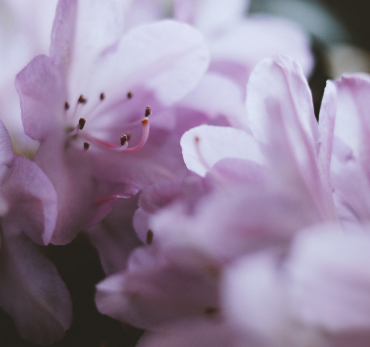
Above: rhododendron ponticum
Project 08: Invasive Species Management
Invasive species management is an ongoing and expensive issue. Annual works are carried out to manage the invasive rhododendron ponticum and prickly heath (Gaultheria mucronata).

Project 09: Deer Management
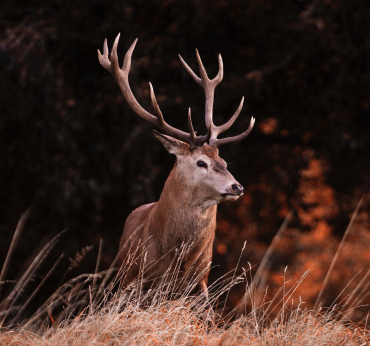
Project 09: Deer Management
With no natural predator, ever increasing numbers of red deer can lead to significant pressures on the sensitive woodland and peatland habitats within the park. Ongoing management of the red deer population is necessary to sustain a healthy and vibrant ecosystem within Glenveagh National Park.

Habitats
Glenveagh supports a number of important habitat types ranging from pristine rivers and lakes to some of the highest peaks in Ireland. These habitats are home to plants and animals of both national and international importance. Our aim is to conserve, and if necessary, enhance the quality of these habitats.
Uplands
Though bare and sparsely vegetated, the uplands at Glenveagh National Park are home to a range of fascinating flora and fauna. Arctic alpines, mosses and liverworts as well as hares, golden plovers, ravens and peregrine falcons have all settled on the rocky precipices that wouldn’t look out of place in the Arctic or lower Alps.
Read more about the uplands in our Habitats Guide.
Woodlands
Glenveagh’s 100 hectares of natural and semi natural woodlands are among the few native stands left in Co Donegal. The woodlands boast a mix of native and non-native trees including sessile oak, downy birch and Scots pine. The wood warbler, rare in Ireland but an annual visitor to Glenveagh, arrives in mid-May. Leislers bat, Ireland’s largest bat species, emerges from hibernation in spring, and the woodlands are also home to a wide variety of animals including stoats and pine martens.
Read more about the woodlands in our Habitats Guide.
Peatlands
Glenveagh’s peatlands are a key part of Ireland’s natural history. From the dry patches of bogland with its ling and bell heather and the damper patches which support wet grassland including fescue, deer grass and molinia to the lower slopes of the bog where bog cotton is abundant. Red deer are the largest animal in the peatlands and the meadow pipit is prolific in this area.
Read more about the peatlands in our Habitats Guide.
Freshwater
Lakes in Glenveagh range from small lochans to the deep waters of Lough Veagh. Most of the park’s lakes hold brown trout, salmonoid fish, eels and the ‘land-locked’, endangered charr. The Glaskeelan river, whose headwaters rise from Lough Inshagh, is an important breeding habitat for the freshwater pearl mussel. Lough Veagh is also the only breeding centre in Ireland of the red-throated diver.
Read more about the freshwater habitat in our Habitats Guide.
Flora
Glenveagh is home to a mix of native and non-native trees. The main species are sessile oak, downy birch, rowan, holly, hazel, yew and aspen. Scots pines are also a key feature having been planted as shelter belts around the lake shore.
The denser areas of woodland are rich in plants adapted to moist shady conditions. Mosses and ferns form lush green carpets on boulders and trees. Golden leafed saxifrage and liverworts cover the wetter rocks and woodrush, wood sorrel and wood anemone abound on the woodland floor.
The uplands are home to a range of Arctic alpines,including alpine club-moss, silvery moss and dwarf willow. Ireland has some of the most significant areas of blanket bog in the world and has international obligations to protect this habitat and its species. These areas are a key part of Ireland’s natural history and heritage and are rich in wildlife and plant species.
From the dry patches of bogland with its ling and bell heather and the damper patches which support wet grassland including fescue, deer grass and molinia to the lower slopes of the bog where bog cotton is abundant.
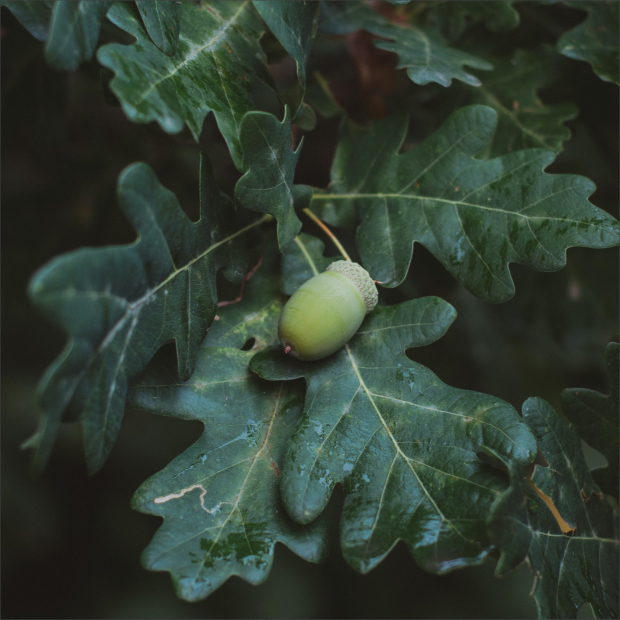
Protected & Rare Flora
Several protected plant species are found in Glenveagh including Killarney fern, the small-white orchid and heath cudweed.
Many scarce plants have been recorded from cliffs and gullies, mainly around Slieve Snaght and the Poisoned Glen area. These include brittle bladder-fern, alpine clubmoss, stiff sedge, mountain sorrel and Irish spurge. Purple saxifrage and alpine saw-wort have also been recorded from this area.
Cystopteris fragilis is a species of fern known by the common names brittle bladder-fern and common fragile fern. It can be found worldwide, generally in shady, moist areas. The leaves are up to 30 or 40 centimetres long and are borne on fleshy petioles. Each leaf is divided into many pairs of leaflets, each of which is subdivided into lobed segments. The underside of the leaf has many rounded sori containing the sporangia.
In Ireland they are mainly found in the west and north of the country on base-rich rocks, in damp, shaded rock-crevices and on walls. Spores ripen July–August.
Sources: Wikipedia, Irish Wildflowers
Small White Orchid is a protected flora species that grows in mountain grassland and on rock ledges. This protected species flowers from May to July. A sighting is rare but if you do we recommend bending to smell due to it’s delicate vanilla fragrance. If you do sight this flower, please keep in mind our Protect Nature code and be mindful of it and other flora that may surround it.
Sources: Wildflowers of Ireland
Trichomanes speciosum, commonly known as the Killarney fern, is a species of fern found widely in Western Europe. It is found mostly near the western coasts of the United Kingdom and Ireland and at scattered locations inland.
Killarney fern is a medium-sized, long-lived fern with delicate, highly divided, bipinnate fronds arising from a creeping rhizome. This species likes humid, dark, sheltered sites beside waterfalls, in rock crevices and under over-hanging rocks. This vulnerable and very rare species is protected in Ireland. It is one of only three European species with translucent leaves and requires a humid, frost-free environment.
Sources: Wikipedia
Diphasiastrum alpinum, the alpine clubmoss, is a species of clubmoss. It was first described by Carl Linnaeus in his Flora Lapponica, 1737, from specimens obtained in Finland. It has a circumpolar distribution across much of the northern parts of the Northern Hemisphere: much of Canada, the northwestern United States, northern and central Europe, Russia, China and Japan.
Diphasiastrum alpinum grows 10–20 cm tall from stems which grow just under the surface of the ground. The leaves are hollow at the bases.
Sources: Wikipedia
Carex bigelowii is a species of sedge known by the common names Bigelow’s sedge, Gwanmo sedge, and stiff sedge. It has an Arctic–alpine distribution in Eurasia and North America, and grows up to 50 cm tall in a variety of habitats.
Stiff sedge produces 3-angled stems, growing in a tuft or singly. The leaves are stiff and dark green, and the leaves of previous seasons may remain on the plant. It has a thick root network that allows it to form a turf, and the roots may grow 80 cm deep in the soil. The plant sometimes reproduces sexually, producing seeds, which can remain viable for 200 years.
Sources: Wikipedia
Omalotheca sylvatica, also called woodland arctic cudweed, is a species of plant from family Asteraceae found in Eastern United States and British Columbia, on the lawns, roads, and in the forests. They have a self-supporting growth form, and are native to Canada, Saint-Pierre Et Miquelon, and The Contiguous United States. They have simple, broad leaves. Individuals can grow to 33 cm.
Sources: Wikipedia
The distribution of E. hyberna is stable in Ireland. A rhizomatous perennial of woodland glades, hedgerows and shaded stream banks, it grows best in dappled sun for at least part of the day. Irish spurge is abundant in south west Ireland, but rare elsewhere.
It has bright-yellow clusters of flowers perched on 5 short stalks. Consists of oval or kidney-shaped yellow glands and very warty fruit, with yellowish seeds. Grows to a height of 30–60 cm in acidic soils of grassland areas, along roadsides, among open woodland and riversides. Flowering from April–June, this species is perennial and native.
Saxifraga oppositifolia, the purple saxifrage or purple mountain saxifrage, is a species of plant that is very common in the high Arctic and also some high mountainous areas further south, including northern Britain, the Alps and the Rocky Mountains.
It is a low-growing, densely or loosely matted plant growing up to 5 cm high, with somewhat woody branches of creeping or trailing habit close to the surface. The leaves are small, rounded, scale-like, opposite in four rows with ciliated margins. The flowers are solitary on short stalks, petals purple or lilac. It is one of the first spring flowers, continuing to flower during the whole summer in localities where the snow melts later. The flowers grow to about 13 mm in diameter.
Sources: Wikipedia
Oxyria digyna is a species of flowering plant in the buckwheat family. It is native to arctic regions and mountainous parts of the Northern Hemisphere.
The leaves of oxyria digyna are quite distinctive, as this is one of relatively few species with reniform foliage; the green to purplish leaves have a rounded apex and rounded projections below the stalk attachment point. They grow mostly around the base of the plant, on stalks that are several times longer than the leaf width, up to 14 cm. They bear dozens of small flowers, greenish red in colour. Plants typically produce one to four flower stalks. The leaves are edible. This species is commonly found in areas that are snow-covered in winter but clear relatively early in the season.
Sources: Wikipedia
This is an arctic-alpine species scattered across Ireland in a few mountain ranges, mainly in the west. The only sites in the east are in the Wicklow Mountains and the Mourne Mountains. Only one of the Mourne Mountains (Slieve Muck) has the plant, where it was discovered about one hundred years ago, but not seen to flower until 1937. It grows sparingly in fissures of a slaty rock at about 1800 feet altitude.
This plant has long-oval leaves and a dense mass of purple flowerheads at the top of its stem, which reaches about eight inches or more in height. It flowers in August.
Sources: Habitas UK
Anemonoides nemorosa, the wood anemone, is an early-spring flowering plant in the buttercup family Ranunculaceae, native to Europe. Other common names include windflower, thimbleweed, and smell fox, an allusion to the musky smell of the leaves. It is a perennial herbaceous plant growing 5–15 cm tall. The plants start blooming in spring, March to May in the British Isles soon after the foliage emerges from the ground. The flowers are solitary, held above the foliage on short stems. The flowers are 2 cm in diameter, with six or seven petal-like segments with many stamens. In the wild the flowers are usually white but may be pinkish, lilac or blue, and often have a darker tint on the backs of the tepals.
Sources: Wikipedia
Eriophorum angustifolium, commonly known as common cottongrass or common cottonsedge, is a species of flowering plant in the sedge family, Cyperaceae. Native to North America, North Asia, and Northern Europe, it grows on peat or acidic soils, in open wetland, heath or moorland. It begins to flower in April or May and, after fertilisation in early summer, the small, unremarkable brown and green flowers develop distinctive white bristle-like seed-heads that resemble tufts of cotton; combined with its ecological suitability to bog, these characteristics give rise to the plant’s alternative name, bog cotton.
Sources: Wikipedia
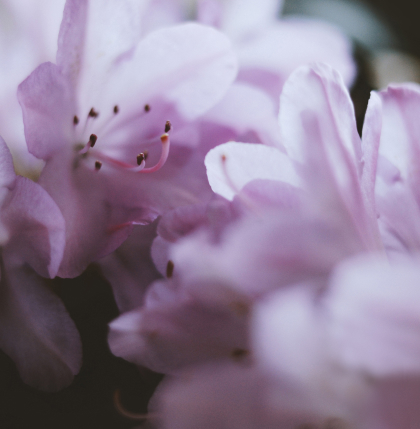
Above: Rhododendron Ponticum
Invasive Flora
As with other areas, Glenveagh has to contend with the highly invasive rhododendron ponticum. This non-native plant was introduced to Ireland in the early 19th century primarily for ornamental purposes.
If left unmanaged, rhododendron stands will out-compete native flora in woodland and peatland habitats, causing severe degradation in their quality. This in turn can have an adverse effect on the fauna that depend on those habitats and to the wider surrounding ecosystem.
Fauna
Glenveagh National Park is teeming with wildlife. Whether you find yourself in our woodlands, out amidst our peatlands, hiking some of our upland areas or taking in our lakes and rivers, there is always something to see.
The diversity of habitats in Glenveagh is reflected in the wide range of bird species here. The peregrine falcon and the golden eagle are two of the larger predators frequenting the park. The wood warbler, the spotted flycatcher and the chiffchaff call the woodlands home, and the red-throated diver has its only Irish breeding centre in Lough Veagh. The peatlands play host to a number of bird species including skylarks, red grouse and the golden plover.
Read more about Glenveagh’s birds in our Flora and Fauna Guide.
An abundance of terrestrial mammals can be found in Glenveagh. The largest animal in Glenveagh is the red deer and they are primarily found in the upland areas of the park. The best time for watching red deer is during the mating season or ‘rut’ between mid-September and mid-November. Our guided educational walks in autumn ‘Rut Walks’ during this time offer a chance to hear the distinctive call of the stags.
The upland regions of Glenveagh are also home to the Irish hare, which survives on a diet of mountain grasses and sedges.
Several species of bat can be found in Glenveagh, including the common and soprano pipistrelle, Daubenton’s Bat and Ireland’s largest bat, the Leisler’s bat. We run ‘Bat Nights’ during the summer months, a guided night-time walk with bat detectors.
Otters can be found in the main valley of Glenveagh and are occasionally observed in rivers both above and below Lough Veagh.
Badgers and foxes are important predators in the Glenveagh ecosystem and the park is also home to stoats and pine martens.
Read more about Glenveagh’s mammals in our Flora and Fauna Guide.
From the smooth newt and common frog to Ireland’s only native reptile, the common lizard, Glenveagh is teeming with a diverse wildlife. The freshwater pearl mussel, a long lived filter-feeding bivalve capable of surviving for up to 140 years, is found in significant numbers in the freshwater habitats in Glenveagh. Most of the park’s lakes hold brown trout, salmonoid fish and eels. Lough Veagh has modest runs of salmon and sea trout as well as stocks of arctic charr.
Read more about Glenveagh’s amphibians, reptiles and aquatics in our Flora and Fauna Guide.
Seasonal Tips
There is a spectacular show of spring plants in the gardens and wider landscape coupled with the increasing bird song and activity in the early morning and lengthening days. Depending on when Easter falls, this time of year is much quieter apart from this holiday time.
The park buildings and services are closed on Good Friday.
There are often events, guided walks, courses and family nature activities run throughout the park during this time as well as courses. Plant life in our bogs reaches its peak and insect life is most visible during this time. The Castle Gardens reach their full bloom and make for a special part of your visit.
Expect some queues for car parking, buses and access to the tea rooms on busy days.
Our woodlands put on a spectacular show of colour and with quieter paths and trails, you can enjoy more of the peace and tranquillity Glenveagh has to offer. The sound of the red deer rut can often be heard in the distance and earlier sunsets offer amazing views for the keen photographer.
Watch out for changing weather and be aware of storms and heavier rainfall.
This is our quietest time of year and can include harsh weather conditions, but the dramatic change of daylight and weather systems can add to Glenveagh’s mystery.
While some services such as the tea rooms have reduced opening hours, the park remains open all year round including the Visitor Centre, which is open 7 days a week.
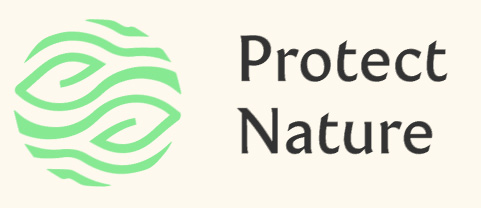
Thank you for helping us protect nature at Glenveagh. When you enjoy responsible outdoor recreation here, you help us preserve the unique creatures and habitats of the Glenveagh wilderness.








